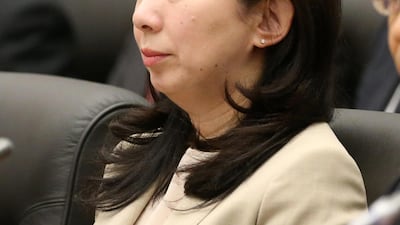Japanese Finance Minister Taro Aso has named Tokiko Shimizu as an executive director of Japan's central bank, the first woman to take on such a role in the Bank of Japan’s 138-year history.
Ms Shimizu, who is managing the BOJ's branch in Nagoya, is to succeed Eiji Maeda, who retired on Sunday, Japan's Nikkei newspaper reported on Monday.
She will occupy one of six executive director posts at the central bank, which was established in October 1882. Executive directors oversee operations, including monetary policy, financial markets, economic analysis and the overall banking system in Asia’s second-biggest economy. She will also continue her role as the Nagoya branch manager of the central bank, according to the report.
Ms Shimizu started working for the country’s central bank in 1987 and rose through the ranks to take up roles in the financial markets division and in foreign exchange operations. She graduated from the University of Tokyo with a degree in engineering and, in 2010, became the first woman to manage the BOJ's Takamatsu branch. She was also the general manager for Europe and chief representative in London between 2016 and 2018.
Women make up 47 per cent of the central bank's workforce but only 13 per cent of senior managerial posts and 20 per cent of expert positions dealing with legal affairs, payment systems and bank notes, CNN reported, citing BOJ data.
Women have been represented on its policy board – the highest decision-making body responsible for setting monetary policy – since it was formed in 1998. However, only one of the board's nine current members is a woman, and the bank has never had a woman governor, unlike the US Federal Reserve or the European Central Bank.
Although females make up 51 per cent of the country’s population, Japan ranks 115th in terms of economic participation and opportunity, according to the World Economic Forum’s Global Gender Gap 2020 report.
“Japan’s gender gap is by far the largest among all advanced economies and has widened over the past year,” the Switzerland-based forum said in the report.


